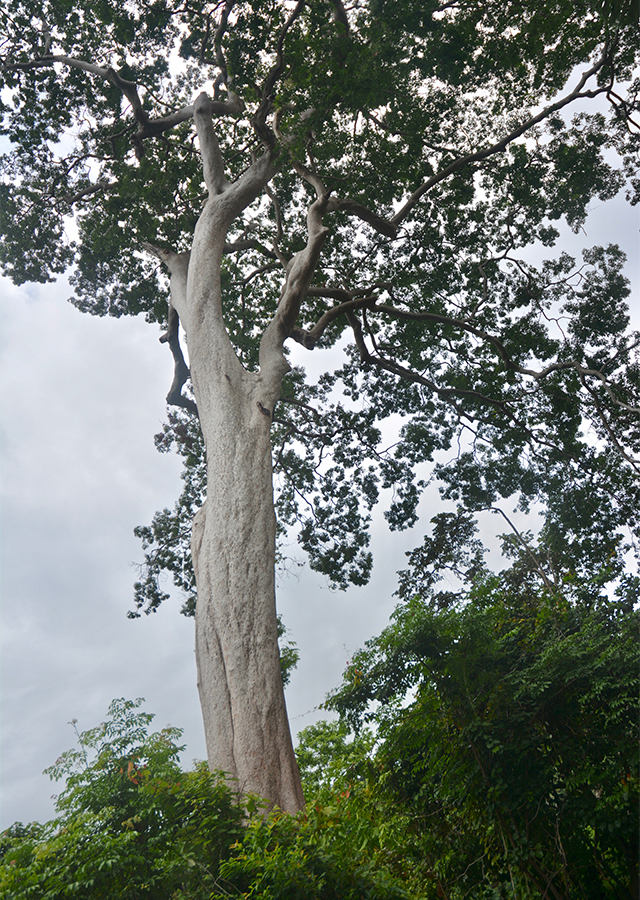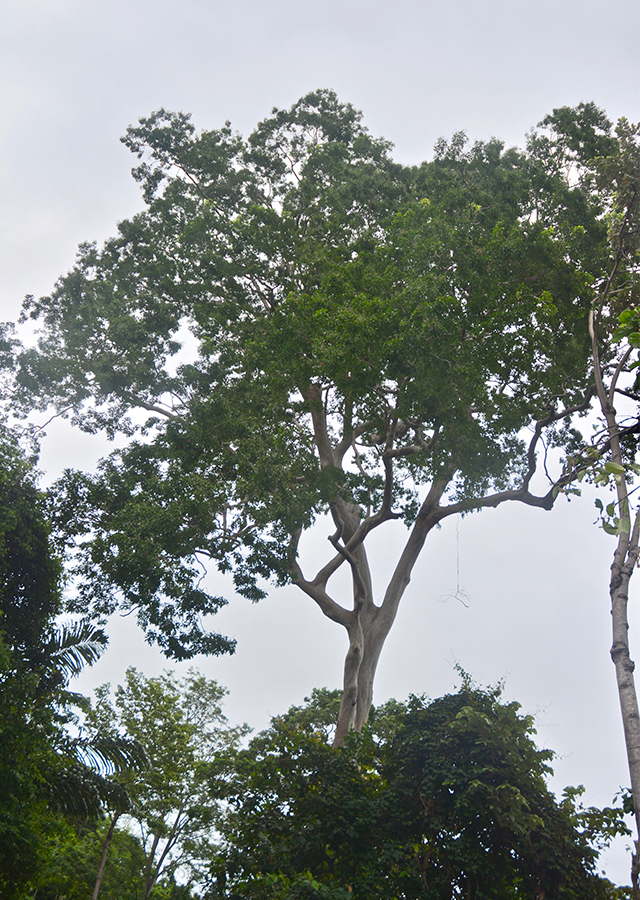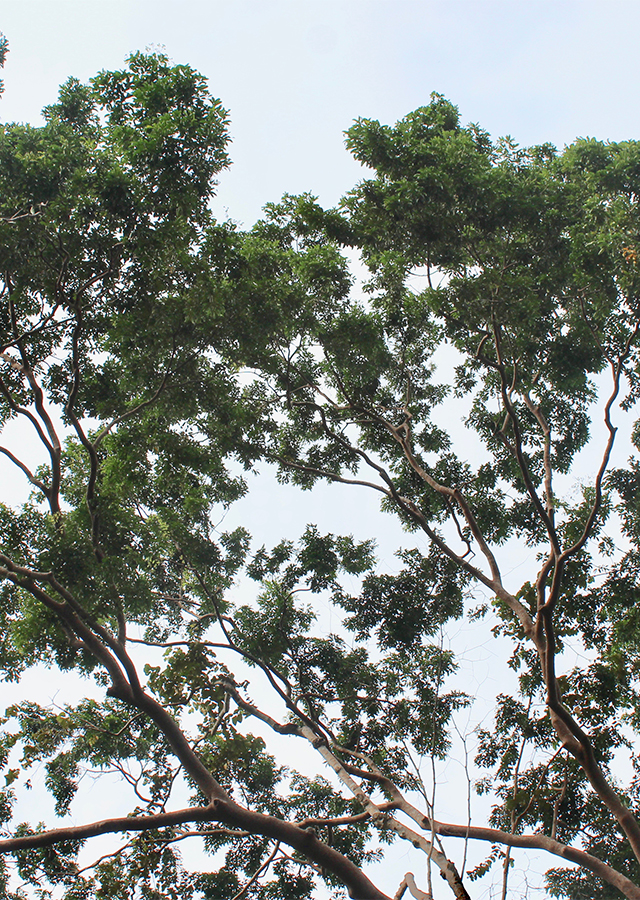Velvet Tamarind
Dialium indum L.
Fabaceae
Location in our garden
Orchard



Synonym
Habitus
Trees. Evergreen tree growing up to 40 m tall.
Part Used
Leaves
Fruit
Growing Requirements
Full Sunshine
Habitat
Wetland
Forest
Overview
Wild distribution of the species is found in Peninsular Thailand, Peninsular Malaysia, Borneo, Sunda Islands, Sumatra and Java. The tree produces a popular fruit and a valuable timber. The plant is also cultivated to a limited extent, especially for local consumption. The main problem for expanding the plantation of this fruit tree is its long juvenile period (15-17 years).
Vernacular Names
Mak kham phep (Laos), Enkeranji (Malaysia), Luk yee (Thailand), Samttamarinde (German), Keran-keran (Borneo), Kranji (Sumatra)
Agroecology
A canopy tree of mainly lowland primary forests, sometimes in swampy areas including peat swamp, at elevations up to 1,150 m. It grows well in well drained, rich fertile soil with high organic matter and in humid shady environment or in partial shade. The tree seems to tolerate good as well as poor soil.
Morphology
- Roots - tap root with a lot of lateral roots.
- Stems - woody with color yellow-brown to chestnut-brown, growing up to 40 m tall, but usually much smaller. The bole can be up to 100 cm in diameter
- Leaves - pinnate with 3-9 coriaceous leaflets arranged alternately.
- Flowers - small, white, without petals and formed in terminal panicles. Bracts and bracteoles are small, calyx is 5-partite to near base, oblong with rounded apex.
- Fruits - small dry, oval pod laterally compressed, 20 mm across, blue-black when ripe. The brittle pericarp of the dried ripe fruit is broken off and the fleshy pulpy mesocarp is sucked out and eaten and the seed disposed or spitted out.
- Seeds - Dorsi-ventrally flattened, squarish, 7–8 mm across, 3 mm thick, glossy brown, and covered with fleshy pulp.
Cultivation
Since the velvet tamarind tree has never been cultivated there is almost no available information relating to propagation. It is believed that under wild habitat, the tree grows from seed.
Chemical Constituents
Steroids, terpenoids, alkaloids, flavonoids, phenolic, metilsalisilat, geraniol, amino acid, poliol, dicarboksilat acid, saponins, tannins, galic acid, glutamic acid, oleic acid, palmitic acid.
Traditional Medicinal Uses
Medicinal Uses
- In a nutshell, D. indum fruit is a good natural antioxidant source that can be an excellent alternative for the improvement of population health.
- Aid in the control of cholesterol in the body by preventing its re-absorption into the body.
- It is used to increase the contractive strength of the heart and regulate its beat rhythm.
Traditional Uses
- The stem bark and the leaves have been employed in the treatment of guinea worm infections, diarrhoea, and herpes.
Part Used
Reference Sources
- Fao. (No date). Species with potential for commercial development. http://www.fao.org/3/ab777e/ab777e04.htm. 23-07-2020.
- Fern, Ken (2014). Useful Tropical Plants. Dialium indum. http://tropical.theferns.info/viewtropical.php?id=Dialium+indum. 23-07-2020.
- Helmi, H.R. (2019.) Phytochemicals Profile and Extraction of Asam Keranji Seeds (Dialium indum L). https://www.researchgate.net/publication/330535325_Phytochemicals_Profile_and_Extraction_of_Asam_Keranji_Seeds_Dialium_indum_L. 23-07-2020.
- Ijoma, K.I., & Ajiwe, V.I.E. (2017). Hytochemical Screening of Dialium indum Leaf extract. International Journal of Phytopharmacy Vol. 7(1): 06-13. https://ssjournals.com/index.php/ijpp/article/view/3942/2704. 23-07-2020.
- Lim, T.K. (2012). Edible Medicinal And Non Medicinal Plants - Fruits Vol. 2: 624-626.
- Osman, M.F., Hassan, N.M., & Khatib,A. et al. (2018). Antioxidant Activities of Dialium indum L. Fruit and Gas Chromatography-Mass Spectrometry (GC-MS) of the Active Fractions. National Center for Biotechnology Information, U.S. National Library of Medicine. Antioxidants (Basel) Vol. 7(11): 154. https://www.ncbi.nlm.nih.gov/pmc/articles/PMC6262551/. 23-07-2020.

